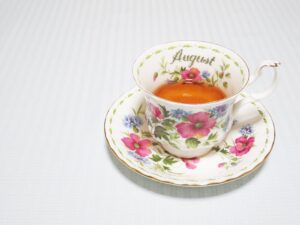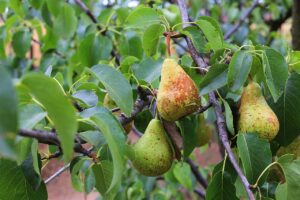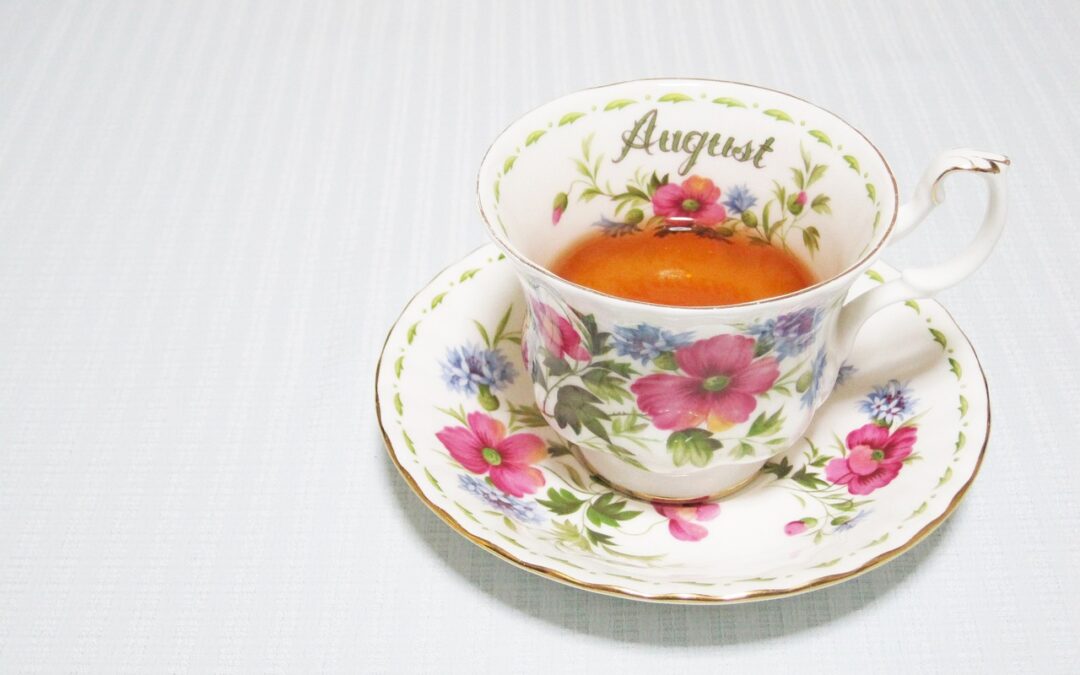Gardening Jobs for August: Abundance, Care and Forward Planning

August marks the tail-end of summer in the UK garden. While many plants are still thriving in the sunshine, subtle signs of the seasonal shift are beginning to appear. The evenings draw in a little earlier, seed heads start to form, and there’s that unmistakable hint that autumn isn’t too far away.
This month is about balance — enjoying the late-summer abundance, keeping things tidy, and making preparations for the cooler months ahead. There’s still plenty to enjoy in the garden, and with a little care, you can stretch the season of colour and productivity well into September and beyond.
Lawn Care Tips for August
By August, lawns often slow their growth, especially in hot, dry weather. Resist the temptation to mow too short — instead, raise the mower blades to reduce stress on the grass. Longer blades of grass help shade the soil, keeping it cooler and locking in precious moisture.
Feeding is a little different this month. High-nitrogen fertilisers, which encourage lots of leafy growth, are best avoided now. Instead, treat your lawn to a dose of liquid seaweed. Seaweed contains natural hormones and trace elements that stimulate healthy root growth and improve resilience.
If you prefer, you can wait until September and apply an autumn lawn feed, which focuses on strengthening roots and preparing the grass for the rigours of winter.
Deep watering, when needed, is better than frequent light sprinkling. Aim for 20 minutes at a time so that the water penetrates down to the roots. Lawns may brown in hot weather, but don’t worry — they are remarkably resilient and usually bounce back quickly with autumn rains.
Interested in reviving your lawn with a treatment plan? Give us a call or contact us here
“Raise the blades, water deeply, and don’t stress about a bit of summer browning — your lawn will recover.”
How to Water and Feed Plants in August
Hot, dry weather often continues into August, and even when cooler spells arrive, the soil can dry out quickly. Watering remains one of the most important jobs this month — particularly for containers, hanging baskets, vegetables, and anything newly planted.
Always water deeply, allowing time for the moisture to soak down into the soil. A quick sprinkle does little more than dampen the surface and encourages shallow rooting, this can actually cause roots to grow upwards towards the surface, where the soil is hotter causing more stress to the plant. Early morning is best or late evening is better than none.
“Water at the base, not over the foliage — sprinklers in the evening can encourage mildew.”
As you water, don’t forget feeding. Flowering plants and fruiting crops still benefit from a liquid feed every 7–10 days. This regular boost will keep them blooming and producing right through the month. Tomatoes, courgettes, beans, and flowering annuals will all respond with vigour.
Deadheading and Trimming in Late Summer
Deadheading is one of the simplest but most effective gardening jobs in August. Removing faded flowers from roses, dahlias, cosmos, and sweet peas prevents them from setting seed and encourages new blooms.
If you’ve been regularly cutting sweet peas for the house, you’ll already have noticed how they keep producing. But once they go to seed, they’ll quickly give up flowering. Keep on top of them and you’ll enjoy their scent for weeks yet.
Lavender is another plant that benefits from attention this month. Trim back flowered stems as they fade, cutting fairly tightly to keep the plant compact. Left untrimmed, lavender can soon become woody and straggly. This quick job will help your lavender stay neat and healthy for years to come.
Evergreen hedges can also be given a final tidy-up in August. A well-timed second trim keeps them looking smart until the following spring.
“Deadhead little and often — it’s the quickest way to keep borders looking fresh and colourful.”
What to Plant in August for Autumn Colour
Just because summer is nearing its end doesn’t mean your garden has to lose its vibrancy. August is a perfect time to plant for late-summer and autumn colour.
Asters, sedums, rudbeckias, and heleniums all bring rich shades of purple, pink, yellow, and orange to the borders just as earlier flowers are fading. These plants are also invaluable for pollinators, providing nectar late in the season when bees and butterflies need it most.
August is also the ideal time to order your spring-flowering bulbs. Daffodils, tulips, crocuses, and hyacinths are all widely available now, with an astonishing variety of colours and shapes to choose from. Ordering early ensures you get the best selection, and you’ll thank yourself in spring when those first shoots emerge.
“Plant now for a finale of autumn colour — and plan ahead for a dazzling spring.”
Fruit and Vegetable Harvests in August

August is a month of abundance in the veg patch and fruit garden. Beans, courgettes, tomatoes, cucumbers, potatoes, and salad crops are all in full swing. The key is to keep harvesting regularly. Many vegetables — especially beans and courgettes — will stop producing if you let them grow too large or too many fruits ripen at once.
Soft fruits also reach their peak in August. Raspberries, blackberries, and blueberries are sweet and plentiful, while apples and plums begin to ripen on the trees. Net fruit bushes if birds are helping themselves to your harvest, but check nets daily to ensure wildlife doesn’t get trapped.
“Remember! Pears don’t ripen on the tree, pick when they have some colour and ripen at room temperature, to speed the process, put them in a bowl with Bananas that will release ethylene gas!”
Successional sowing can continue this month too. Quick-growing crops such as radishes, salad leaves, and spinach can still be sown for a late harvest.
“The more you pick, the more your plants will give — don’t let crops go to waste.”
Planning Ahead: Preparing for Autumn in the Garden
As well as tending to the immediate needs of your garden, August is a good month to start thinking ahead. Take note of which plants have performed well this summer, and which areas of the garden could use a little more structure or colour.
Consider dividing perennials once the weather cools, or making lists of bulbs and seeds you’d like for next year. Autumn is a busy planting season, and the more prepared you are now, the smoother it will be.
Enjoy Your Summer Garden
Amidst all the watering, trimming, and harvesting, August also offers a chance to pause and savour the beauty of the season. Sit back with a cool drink, breathe in the scent of roses and herbs, and listen to the hum of bees among the flowers.
“Gardening is as much about enjoyment as it is about effort — take time to appreciate your hard work.”
After all, summer is fleeting. Taking time to enjoy your garden now ensures you don’t miss the very best days of the year.
Final Thoughts
August in the garden is a month of contrasts — abundance and decline, colour and fading, productivity and preparation. It’s a time to enjoy the fruits of your labour while also setting the stage for the seasons ahead.
Keep on top of watering and deadheading, give your lawn a little care, plant for late colour, and start planning for autumn bulbs. And above all, don’t forget to enjoy it.
✨ “Your garden in August is a gift — savour it, nurture it, and prepare it for the beauty still to come.”
Missed last month’s feature? We’ve got you, here you go; July’s Gardening.

